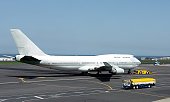
alanahodgson26
About alanahodgson26
The Rise of Private Jets: An In-Depth Examine On Luxury Aviation
The private jet industry has skilled vital development over the past few a long time, becoming a symbol of luxury, convenience, and exclusivity. This report goals to explore the varied sides of private jets, together with their history, types, operational dynamics, market tendencies, economic implications, and the environmental issues surrounding private aviation.
Historical Context
The idea of private aviation dates back to the early twentieth century, with the first private aircraft being used by rich people and firms. The publish-World Warfare II era marked a turning level, as advancements in know-how made flying extra accessible. The introduction of business jets in the 1960s, such as the Learjet 23, revolutionized the industry, catering specifically to the needs of business executives and affluent people. The deregulation of the airline trade in the late 1970s further facilitated the growth of private aviation by permitting extra flexibility in air journey.

Types of Private Jets
Private jets could be broadly categorized into a number of varieties based mostly on measurement, vary, and function:
- Gentle Jets: These jets, such as the Cessna Citation Mustang and Embraer Phenom 100, are best for brief-haul flights and usually accommodate four to 7 passengers. They are value-effective and suitable for fast trips.
- Midsize Jets: Midsize jets, just like the Hawker 800XP and Quotation XLS, supply more space and vary than gentle jets, accommodating 6 to 9 passengers. They are fashionable for medium-haul flights, providing a steadiness between consolation and cost.
- Heavy Jets: Heavy jets, including the Gulfstream G550 and Bombardier Global 6000, are designed for lengthy-haul flights and may carry 10 to 19 passengers. They provide luxurious amenities and are geared up for worldwide travel.
- Extremely-Long-Range Jets: These jets, such because the Bombardier Global 7500 and Gulfstream G700, are able to flying non-cease for over 7,000 nautical miles. They cater to the needs of excessive-profile people and firms requiring global travel.
- VIP Airliners: These are industrial airliners retrofitted for private use, providing in depth house and luxury. Examples include the Boeing Business Jet (BBJ) and Airbus ACJ sequence.
Operational Dynamics
Private jets operate beneath a distinct set of rules in comparison with business airways. They will utilize smaller airports and fixed-base operators (FBOs), allowing for higher flexibility in flight planning. This operational versatility enables private jets to succeed in locations that may not be accessible to business flights, considerably decreasing travel time.
The booking course of for private jets can range. Clients could choose to personal a jet outright, enter into fractional possession agreements, or make the most of jet charter companies. Fractional ownership allows multiple house owners to share the costs and utilization of a jet, whereas charter services provide on-demand entry with out the duties of ownership.
Market Trends
The private jet market has seen a surge in demand, significantly within the wake of the COVID-19 pandemic. Travelers have increasingly turned to private aviation as a safer different to business flights, leading to a big uptick in charter bookings and jet gross sales. In response to trade experiences, the global private jet market was valued at approximately $24 billion in 2021 and is projected to develop at a compound annual development fee (CAGR) of around 5% by 2028.
Key elements driving this growth embrace:
- Increased Wealth: The rise of high-internet-worth individuals (HNWIs) and ultra-high-internet-value people (UHNWIs) globally has expanded the customer base for private jets.
- Technological Advancements: Improvements in aviation technology have led to the event of more environment friendly and comfortable jets, attracting new prospects.
- Changing Journey Preferences: The need for personalized journey experiences and the power to avoid crowded airports have made private jets an interesting choice for a lot of.
Financial Implications
The private aviation sector contributes considerably to the global economic system. It helps a myriad of industries, together with manufacturing, upkeep, and service sectors. Should you loved this article and you would like to get more details relating to How Much To Charter A Private Jet generously check out our own site. In keeping with the National Business Aviation Association (NBAA), enterprise aviation contributes approximately $one hundred fifty billion to the U.S. economic system and helps over 1.2 million jobs.
Furthermore, private jets facilitate business operations, enabling companies to maximise productiveness by decreasing travel time. Executives can hold meetings in numerous cities within a single day, enhancing enterprise effectivity and fostering higher shopper relationships.
Environmental Issues
Despite the undeniable advantages of private jets, they don’t seem to be without their criticisms, significantly relating to environmental impact. Private jets are often considered as a symbol of excess, contributing to carbon emissions and climate change. Studies point out that private jets emit significantly extra CO2 per passenger compared to industrial flights.
In response to growing environmental issues, the private aviation trade is exploring several initiatives to mitigate its influence:
- Sustainable Aviation Fuel (SAF): The adoption of SAF, which may cut back carbon emissions by up to 80%, is gaining traction within the trade. Several operators are investing in SAF to enhance their sustainability credentials.
- Carbon Offsetting: Many private jet operators supply carbon offset packages, permitting customers to invest in initiatives that cut back greenhouse gases, akin to reforestation and renewable vitality initiatives.
- Revolutionary Aircraft Designs: Companies are investing in analysis and growth for electric and hybrid aircraft, which might revolutionize the trade by providing cleaner alternatives to traditional jets.
Conclusion
The private jet business continues to evolve, pushed by technological developments, changing consumer preferences, and economic components. Whereas it gives unparalleled convenience and luxurious, it also faces scrutiny relating to its environmental impact. As the trade strikes forward, balancing progress with sustainability will probably be crucial for its long-term viability. The way forward for private aviation will possible hinge on innovation, regulatory developments, and the trade’s potential to adapt to the changing panorama of world journey.
No listing found.